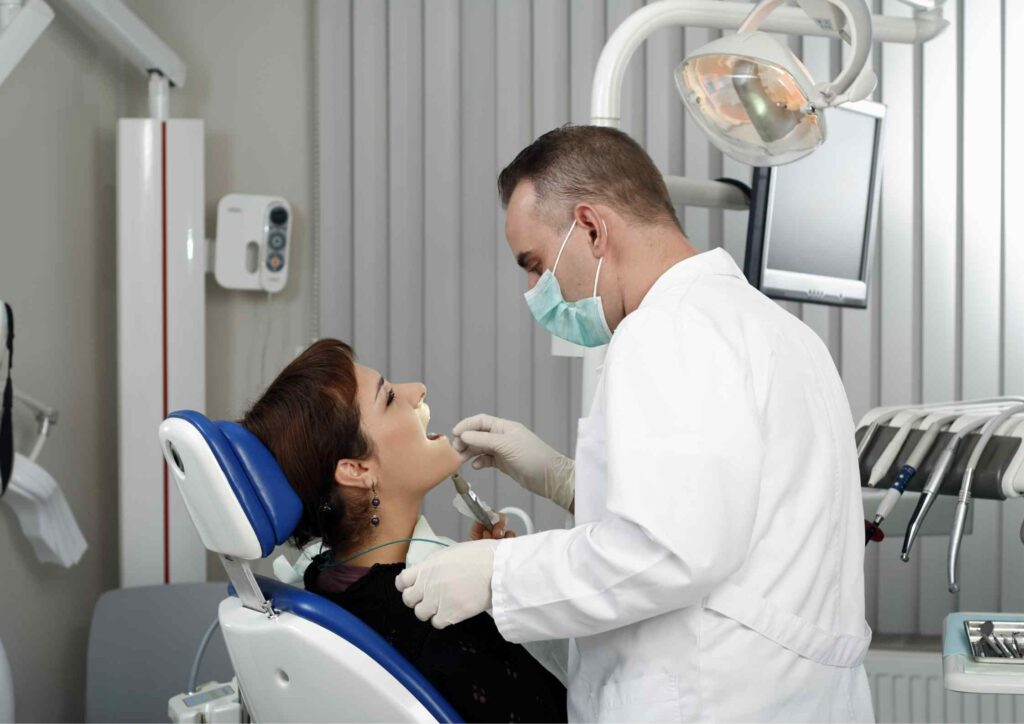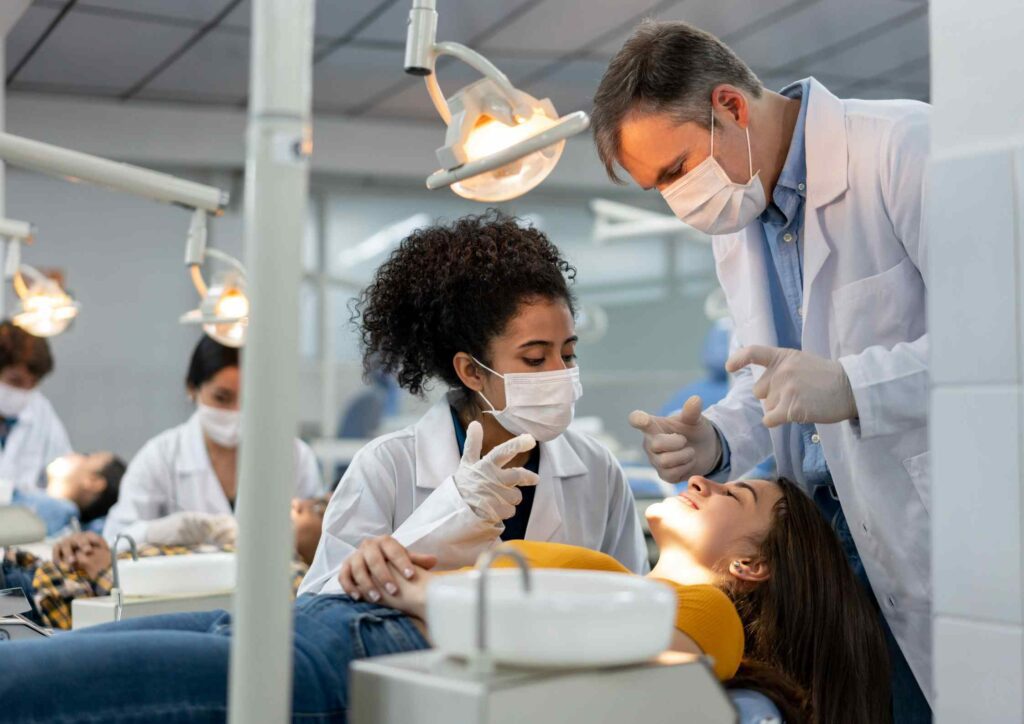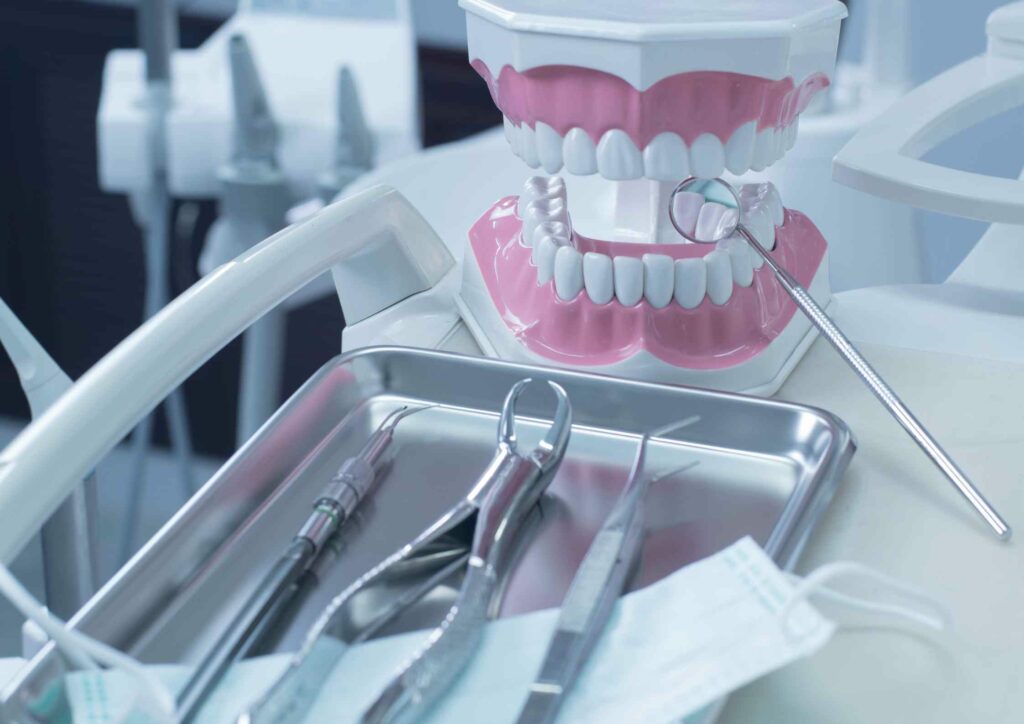Delving into the world of dental health can open doors to a dynamic, rewarding, and impactful career. More specifically, orthodontics is a specialized field within dental health, concentrated on treating patients with improper tooth positioning when the mouth is closed, a condition known as malocclusion. This specialization offers a compelling career path for those interested in making a difference in people’s lives by giving them the perfect smile they deserve.
Importance of Orthodontics As a Dental Career Path
Orthodontics, beyond doubt, plays an essential part in the broader dental health spectrum. Orthodontists work with both children and adults, dealing with a range of issues from crooked teeth to improper jaw alignment.

Orthodontists are responsible for not only enhancing their patients’ smiles but also improving their dental function.
Working as an orthodontist involves diagnosing and treating dental disparities and monitoring patients’ progress over time, making it a fulfilling and continuously evolving profession.
Time required to become an Orthodontist
The journey into the orthodontist career involves a significant investment of time. It typically requires around 10-11 years of education and training post-high school, including:
- Completion of a four-year undergraduate degree
- Four years in dental school
- 2-3 years of specialized orthodontic residency.
No doubt, it’s a long haul, but it offers the chance to possess a highly respected and rewarding career in the world of dental health. Enduring this dedicated timeframe ultimately leads you toward a prosperous, life-changing vocation.
Pre-College Preparation
Before you even set foot on a college campus, there are steps you can take to prepare for a future career as an orthodontist. One of these involves your high school education.
Importance of High School Science Courses
Becoming an orthodontist requires a strong foundation in the sciences. As such, high school students aspiring to this career should focus on taking biology, chemistry, and physics courses. This provides the necessary background for the more specialized coursework to be encountered in college.
General health and anatomy classes can also prove beneficial. A robust understanding of these subjects will build your foundation and make your subsequent studies more comfortable and productive.
Deciding Orthodontics as a Career in High School
If you’re still in high school and orthodontics seems to be your calling, make it official. Start discussing with your academic advisor about your desire to pursue an orthodontist career. They can provide helpful guidance on course selection, college application strategies, and the broader orthodontist education timeline.
Making this decision early may seem daunting, but remember, the more proactive you are, the smoother your journey will be.
College Degree
The initial step on the ladder to becoming an orthodontist is earning a bachelor’s degree.
Necessary Bachelor’s Degree for Becoming an Orthodontist
Educational foundations for an orthodontist career can be built from various academic fields. However, it’s worth noting that most aspiring orthodontists often choose to pursue degrees in biology, chemistry, or a related science field, as these are most closely aligned with coursework later required in dental school.
Despite this, as long as students fulfill all the prerequisites for dental school, their undergraduate major can be in any field they choose.
Importance of Pre-Dental Courses
Apart from having a bachelor’s degree, taking pre-dental courses before your application to dental school is essential. These are typically science-based courses such as biochemistry, organic chemistry, physics, and biology.

Many of these necessary pre-dental courses help prepare you for the Dental Admissions Test (DAT) and instill knowledge and skills that you’ll rely upon throughout your orthodontic career. Validation and understanding of these foundational principles are paramount to your future success in this dental career path.
Dental School Admission
Before you start your journey toward becoming an orthodontist, getting admission into a dental school is the initial step. This process involves prerequisites like completing particular science coursework, having a bachelor’s degree, and clearing a rather crucial Dental Admission Test (DAT).
Completing Dental Admission Test (DAT)
Let’s discuss the DAT first. This test is a standard requirement for admission to dental schools in the U.S. It quantifies a candidate’s understanding in areas such as:
- natural sciences
- perceptual ability
- comprehension skills
- quantitative reasoning
Performing well on the DAT significantly affects a student’s chances of securing a place in a dental school.
Tips for Preparing and Passing DAT
Success in the DAT requires a meticulous preparation plan. Here are a few handy tips for acing this crucial test:
- Begin your preparation early to avoid last-minute stress.
- Use study guides and practice tests extensively.
- Pay extra attention to your weaker areas.
- Seek guidance from peers or mentors who have already gone through the process.
Remember, quality preparation is key, and it can never be underemphasized that careful and systematic preparation is the way to crack this rigorous test.
Dental School
Embarking upon the path to becoming an Orthodontist begins with Dental School. This is an integral component of the journey, laying the foundation for the specialization that is to follow.
4-Year Dental Program
After completing a Bachelor’s degree, aspiring orthodontists must undertake a four-year dental program. Accredited by the Commission on Dental Accreditation, this program focuses on general dentistry.
The rigorous curriculum is designed to mold students into proficient general dentists, even before they consider a specialty.
Coursework and Clinical Experiences
Coursework: The dental school curriculum usually incorporates diverse subjects like human anatomy, physiology, biochemistry, microbiology, pathology, and pharmacology. Furthermore, substantial focus is placed on dental-specific subjects such as Prosthodontics, Oral Pathology, Periodontics, and several others.
Clinical Experiences: Bridging the gap between theoretical knowledge and practical application, the program also involves considerable hands-on clinical experiences. This allows students to put the skills they learned into practice, dealing with actual patients under faculty supervision.
The dental school journey sets the stage for a future in orthodontics, leaving students well-equipped to make the jump toward a rewarding orthodontist career.
Specialty Training in Orthodontics
After completing dental school, aspiring orthodontists typically dive into specialty training in orthodontics. These intensive, hands-on experiences aim to instill the required expertise and knowledge for the specialty.

What to Expect from an Orthodontics Residency Program
In an orthodontics residency program, you can expect to fully immerse yourself in orthodontic theory and practice. Components of these programs often include:
- Advanced study on facial growth and development
- Comprehensive understanding of diagnosis and treatment planning for orthodontic cases
- Clinical experience with managing complex orthodontic cases
- Research involvement to keep up with the latest advancements in orthodontics
- Duration and Content of an Orthodontics Residency
Depending on the program’s specifics, orthodontics residency programs traditionally take two to three years to complete. During this time, residents delve deep into areas such as:
- craniofacial biology
- biomechanics
- advanced orthodontic techniques
Multidisciplinary collaboration and learning are also emphasized to equip residents with a well-rounded approach to patient care. By the end of their residency, graduates have the necessary skills, knowledge, and experience to jumpstart their orthodontist career.
Becoming Board Certified
After achieving your degree and getting some clinical experience under your belt, your next significant step on the orthodontist career journey is to become board-certified. Not only does this certify your competence, but it also dramatically enhances your professional credibility.
The Value of Board Certification
Becoming board-certified is a voluntary process yet an essential one in orthodontics. It adds a prestigious distinction to your name, showcasing your commitment to maintaining the highest standards of professionalism and ethics.
As a board-certified orthodontist, you demonstrate your dedication to offering patients top-notch care and services, elevating your standing within the orthodontic community.
Process and Preparation for Board Certification Exam
The road to board certification involves passing a rigorous exam hosted by the American Board of Orthodontics, the only orthodontic specialty board recognized by the American Dental Association.
It demands substantial preparation, often involving several years dedicated to studying and gaining hands-on clinical training. While time-consuming, it’s a rewarding investment that solidifies your proficiency and fortifies your future in the orthodontist career.
Setting Up Practice
Deciding what to do after completing all the educational and licensing requirements is, without a doubt, a crucial decision. There are typically two prominent paths to establishing independence as an orthodontist.
Deciding between Starting Own Clinic vs. Joining an Existing One
Starting your own clinic gives you the autonomy to make decisions and define your practice according to your vision. However, it does come with significant responsibilities, including management, finance, and marketing.
On the other hand, joining an existing practice can provide you with a well-established platform to build your reputation, but it might limit your professional independence.
Factors to consider when Choosing a Location for Practice
Choosing the right location to kick off your orthodontic career is critical, and multiple factors come into play. Think about the following:
- demographic suitability
- competition in the area
- access to resources
- potential growth opportunities
It’s also important to consider personal preferences such as urban vs. rural environments, proximity to family, and preferred lifestyle.
Making informed decisions at this stage can go a long way in shaping a successful career in the field of orthodontics.
Career Growth and Opportunities
The joy of being an orthodontist offers high job satisfaction and a range of career growth opportunities. With dedication and continuous learning, the sky’s the limit.
Specializations and Post-licensure Education Opportunities
Upon acquiring a license, an orthodontist is not confined to aligning teeth. Their expertise can extend into several specialties, such as:
- pediatric orthodontics
- dental sleep medicine
- temporomandibular disorders
- special care orthodontics
Moreover, orthodontists have the opportunity to improve their skills and keep abreast of new treatments and technology through continuing professional education. This is a fairly open field with numerous possibilities for those eager to explore beyond the usual.
Career Advancements and Potential Earnings
Beyond individual patient care, an orthodontist has the potential to advance professionally. They can step into academia, research positions, or become involved in the administrative aspects of dental health.

As for earnings, according to the Bureau of Labor Statistics, the average annual wage for orthodontists in the U.S. was approximately $230,830 in 2019. Ultimately, the prospect depends largely on an individual’s dedication to their practice, the location, and the size of their patient base.
The Rewarding Orthodontics
Your journey in the world of orthodontics may seem to be demanding, but the rewards are undeniably fulfilling. After all, the years spent in university, followed by more profound specialized training, result in a professional capable of transforming lives one smile at a time.
Here is a recap of a typical timeline:
• Complete a Bachelor’s Degree – typically four years.
• Attend Dental School – typically four years.
• Specialized orthodontics residency is 2-3 years.
• Board certification and licensing.
• Consider your career path: join an existing practice or start your own.
Advice for Aspiring Orthodontists
To stride the path toward an orthodontist career, you need to equip yourself with patience, commitment, and love for learning. Like every profession, it requires dedication. The long timeframe is a testament to the complexity and importance of the healthcare roles we play.
Remember, as an orthodontist, you are not just creating beautiful smiles, but you are also improving people’s quality of life and boosting their confidence. Fill your journey to become an orthodontist with passion and perseverance; the outcome will not disappoint. Good luck!





















